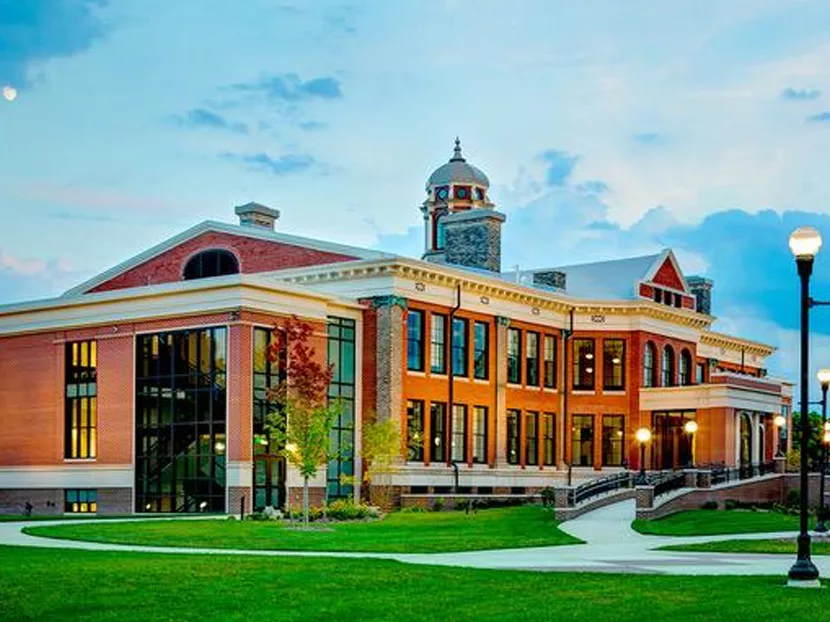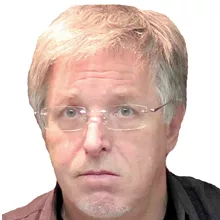It looks like geothermal heating and cooling is finally going to have its moment. Although there are a couple of billion square feet of buildings being conditioned by geothermal systems in the United States, the technology has struggled in relative obscurity for about 80 years.
Several research companies recently issued similar reports. Zion Research in New York said the global geothermal heating market would grow by about 13 percent each year from about $71 billion in 2017 to about $188 billion in 2024. Global Market Insights (GMI) in Cleveland also predicts 13-percent growth from 2016-2023 but uses a smaller total value number. The U.S. share of this market is inconsistently reported as between 35 percent and 50 percent.
Research and Markets in Dublin echoed the growth predictions, as did Pike Research, which says unit sales of ground-source heat pumps will double in the next six years. It notes that growth is being driven by “rising energy prices, growing demand for electricity and regulations on efficiency.”
GMI said, “Unfavorable climatic conditions are also expected to boost demand over the forecast period.”
In a way, geothermal is a no-brainer for today’s world. Ground-source and water-source heating systems offer better performance than air-source heat. And all heat pumps are cleaner than gas, propane or oil. In addition, the BTUs are directly underfoot. There’s no complex extraction of fossil fuels required, no piping it or trucking it across the country.
It saves money and because it often manifests itself as radiant heat, it receives great reviews for comfort and indoor air quality. The initial cost of installation is a barrier but in numerous states new programs are cropping up, offering incentives and easy financing.
Asked if he thinks there will be more geothermal in the future, Jonathan Rumohr, manager of mechanical engineering at TowerPinkster in Kalamazoo, Mich., said, “Oh yes, we’re working on several proposed projects. I see more geothermal wherever I go.”
Geothermal Rebirth for Campus Building
Rumohr was the project engineer for the complete refurbishment of an unsafe, vacant 1904 building at Kalamazoo-based Western Michigan University (WMU). The building envelope was improved and geothermal was installed.
“Now that it is an occupied, functioning university building, it costs less to operate than it did when it was empty and mothballed,” Rumohr noted. “For several years it was heated just enough to keep it from freezing.”
The system consists of 56 vertical wells containing more than 8 1/2 miles of below-grade piping. Heat pumps generate 130 F heating water and 44 F chilled water. Rumohr explains that it’s piped in a self-balancing, reverse-return configuration with variable, primary-only pumping. The arrangement includes source-side and load-side minimum flow bypass valves and two-way control valves.
It allows the control system to monitor feedback from the valves and heating water is reset in 5-degree increments from 130 F to 90 F. Chilled water is reset in 2-degree increments from 44 F to 60 F. The system loop pressure also is reset dynamically to maintain critical valves at 95-percent open, reducing pump horsepower.
“One innovative aspect was a 5-ft.-wide band of under-floor radiant tube sunk into a concrete thermal mass around the perimeter of the building,” Rumohr said. “It releases heat gradually, providing economical, even, comfortable conditioning.”
A dual-wheel, dedicated outdoor air unit provides energy recovery and ventilation air. The variable-speed fan coils and terminal units are controlled by the building schedule and by occupancy sensors.
The energy load was reduced significantly by a complete LED lighting retrofit, the installation of high-performance windows, and the application of 3 in. of closed-cell spray foam inside and 5 in. of rigid polyiso added to the roof. Only low- and no-VOC products were used inside. The space is ventilated per ASHRAE Standard 62.1-2007 or higher, using MERV 13 filters.
The building has an Energy Star score of 97 and LEED Platinum certification. It’s an 80-percent reduction from the Standard 90.1-2010 baseline.
All this was achieved while maintaining heritage building standards. It went from being the least-efficient building on the campus to being the most efficient, with very manageable operating costs. It also saved on the upgrade budget because the alternative was to restore the old steam system. However, the central plant is about a half mile away, which would have meant piping and other costs of $800,000.
The upgrade was designed using BIM Level 500, which can accommodate preventative maintenance. Pump installation data, maintenance logs, filter sizes and so forth were added to the model so that service personnel can quickly determine equipment placement and access critical maintenance information.
A Different Piping Approach in Connecticut
At Indianapolis-based Advanced Energy Group, the Hardin family and the other members of their team have been working on a more-efficient geothermal drilling system. The company has installed projects in Ohio, Michigan, Nevada, Oklahoma, California, Georgia, New Jersey and several in Connecticut. Most of its projects include the Gi4 pipe system that the company invented and perfected over many years.
A third-party engineering company tested Gi4, which was refined before being implemented in several projects to prove it worked, notes Lilli Hardin, vice president of development.
“It saves about 60 percent on drilling, which means that concerning project cost, it saves about 20 percent to 30 percent,” Hardin explained.
The supply and return lines and grout within the pipe are designed differently, resulting in an in-thermal transfer. Thus, wells can be fewer or shallower and still achieve the desired yield.
A handful of projects in Meriden, Conn., use the Gi4 system. These include a new mixed-use development on Colony Street called Meriden Commons I, which incorporates a train station, residential units for low- and middle-income tenants and retail space. The building also benefits from about 97 kW of solar PV, making it a very green project overall.
The next phase, Meriden Commons II, will include three buildings: one mid-rise mixed-use development and two low-rise, townhouse-style buildings, again for low- and middle-income tenants. The designs for all three of the Meriden Commons II buildings are based on the Passive House standard.
Standing Column Geothermal
Geothermal can be designed as ground source, water source, open source and closed loop systems, along with some lesser-known, perhaps innovative design possibilities.
A few years ago at the 9,000-sq.-ft., two-story Kentlands Community Center in Gaithersburg, Md., the old gas furnace began to die. Administrators hoped to upgrade to geothermal but there was concern about the amount of excavation and the difficulty required to drill and connect 20 or more wells.
Hard, crystalline igneous and metamorphic rocks characterize the area geology. Bedrock consists of schist, gneiss, gabbro and other highly metamorphosed sedimentary and igneous rocks, probably of volcanic origin. In some areas, they have been intruded by granitic plutons and pegmatites.
Dick Hottel, of Gaithersburg-based Harvey W. Hottel Inc., designed a standing column geothermal system with four Bosch 6-ton geothermal heat pumps, single and two-stage. Two standing column wells, each 900 ft. deep, were drilled into the granite and cased down to 100 ft. The static water level settled at 14 ft. with a pumping yield of 4 gal./minute each.
Standing column well systems take advantage of conduction, convection and advective heat transfer. The Wi-Fi-enabled system saves about 40 percent in operating costs. Each standing well has a 2 horsepower, variable-frequency drive-controlled submersible pump. They are set at 100 ft. and draw well water through a 2 in. Porter shroud from a depth of 900 ft.
The pumps inject return water back into the static water at the top of the wells. Even when it was brutally cold in 2014, the system provided water at 46 F.
Geothermal for Refrigeration
Kudos to Hottel for knowing the right solution for Gaithersburg, the Hardins for building green geothermal projects in a more affordable way and to Rumohr for his clever thermal mass and high-tech design at WMU.
However, when it comes to thinking creatively, they have some competition from Gary Jacobson of Jacobson Heating & Air Conditioning Inc., way up in Kingsford, in Michigan’s Upper Peninsula.
“We got a call on a Thursday from a local ski operator at the Pine Mountain Kiwanis Ski Club in Iron Mountain,” Jacobson recalled. “They said, ‘Gary, we have 20,000 or 30,000 people coming in next week from all over the world for our annual ski jumping competition. But the temperatures are going to be too warm. Do you think you can freeze our ski jump?’”
It wasn’t much notice and Jacobson had no experience with this kind of project. The ski jump was 383 ft. long, 6 ft. wide and 15 in. thick. He stared out the window for a while, thinking about the temperatures involved. Then he hatched an idea.
“I had been warned not to drill geothermal wells too close together because it could freeze the ground,” Jacobson said. “Maybe we could put the tubes too close together on the ski jump.”
The Jacobson team installed 2-in. rigid board insulation to the underside of the jump and lay the tubing on top of it. The heat pump was operated in reverse and built up 14,000 lb. of ice. Outside temperatures during the week-long ski jump event were between 15 F and 35 F. Jacobson’s supply temperatures from his 5-ton Bosch unit were from about 10 F to 17 F.
His solution was a success and he was celebrated. It cost less than the usual alternatives — by a significant amount. People have encouraged him to market the system to other ski jump operators around the world. So, he has a patent pending on the invention. But that’s not the end of the story.
The Beginning of a New Story
Sometime later Jacobson was talking about the project with his friend, John Bennett from Marquette, Mich. Bennett noted that he, too, had a problem with winter melting. This time it was an outdoor ice rink. Bennett likes hockey. His wife Shana, his two children and all their neighborhood friends have become accustomed to the excellent rink he creates each year.
“They’re skating on it every day,” Jacobson said. “I had to help them.” They tested the geothermal system. It cools the ice from about 32 F to about 23 F. As a bonus, the operation generates heat for the Bennetts’ home. The 3-ton Econar heat pump used for the rink is providing enough heat to cut the Bennetts’ winter bills by about two-thirds.
“It is actually a better invention,” Jacobson noted. “There are a lot more ice rinks around the world than ski jumps.”
Whether it’s skating and hot chocolate in the north country, affordable housing in Connecticut, solving solid granite problems in Maryland or high-tech solutions at WMU, geothermal is beginning to pop up in numerous locations and configurations. And most of these systems seem to save energy costs, cut greenhouse gases and improve the indoor environment. Maybe this time around, geothermal will have more than a moment.






